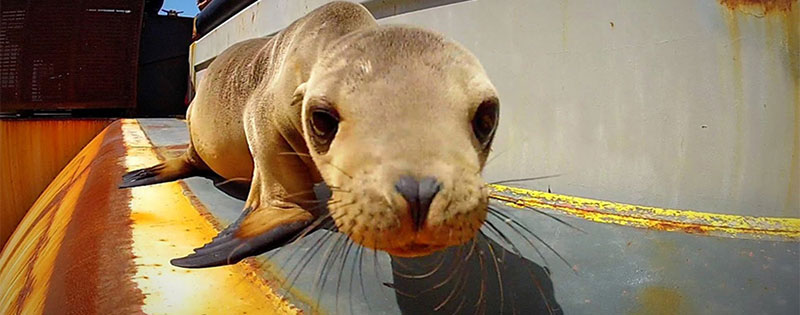Exploring 'Omic Technologies to Support Ecosystem Understanding and Fisheries Assessments
November 19, 2014
The NOAA Office of Ocean Exploration and Research is teaming up with the NOAA National Marine Fisheries Service, Atlantic Oceanographic and Meteorological Laboratory, and Integrated Ocean Observing System, as well as the J.C. Venter Institute and the Scripps Institution of Oceanography to enhance ecosystem observation programs by integrating genome-enabled techniques and technologies (i.e., ‘omics) into the California Cooperative Oceanic Fisheries Investigations (CalCOFI) . CalCOFI is a multi-partner, long-term ecosystem and fisheries study off the coast of California. The first quarterly CalCOFI expedition that includes ‘omics is currently at sea (Nov. 8–25). OER is overseeing the implementation of this effort and is one of the primary funders.
‘Omics is the term for a set of genome-based technologies used to examine DNA, RNA, and proteins from a variety of sample types ranging from single cells to organisms to communities in order to understand who is where, what they are doing, and how they are affected by changing environmental conditions.
Like many marine areas, the CalCOFI region is highly susceptible to multiple stressors, including ocean hypoxia, acidification, and warming; harmful algal blooms; overfishing; and increased acoustic pollution from shipping traffic. Understanding and predicting the impacts of these combined stressors—many of which are caused, mediated, or directly affected by microbes—is critical to the economic stability and resiliency of the region.
‘Omics will be incorporated into CalCOFI in order to help scientists better understand the diversity and functional activity of microbes in the area—enabling us to more accurately predict ecosystem tipping points, augment our understanding of factors that enable or reduce ecosystem resiliency, and potentially unearth critical information regarding ocean response to large-scale pressures, including climate change. This project will function as a pilot for potential broader applications to other regions and across the NOAA fleet.
Incorporating ‘omics into CalCOFI requires minimal investment by NOAA for a large expected payoff. Furthermore, as ship time and labor costs increase, ‘omic technologies promise efficiencies because such tools are amenable for use in situ and on remotely operated vehicle platforms that can relay information in near-real time and do not rely on labor-intensive sorting techniques.
In the long term, ‘omics will ideally add to scientists’ ability to predict, monitor, and recommend responses to environmental changes and their associated effects on human health and the health of ocean and coastal ecosystems off the coast of California and beyond, leading to broader application to other regions and improved national efforts in ecosystem monitoring and management.
CalCOFI is a unique partnership of the California Department of Fish and Game, NOAA Fisheries Service, and the Scripps Institution of Oceanography. The organization was formed in 1949 to study the ecological aspects of the sardine population collapse off California. Today the focus has shifted to the study of the marine environment off the coast of California, the management of its living resources, and monitoring the indicators of El Nino and climate change. CalCOFI conducts quarterly cruises off southern and central California, collecting a suite of hydrographic and biological data on station and underway.
For more information:
NOAA Partners Join CalCOFI to Examine the Potential of ’Omics Research (pdf, page 3)
